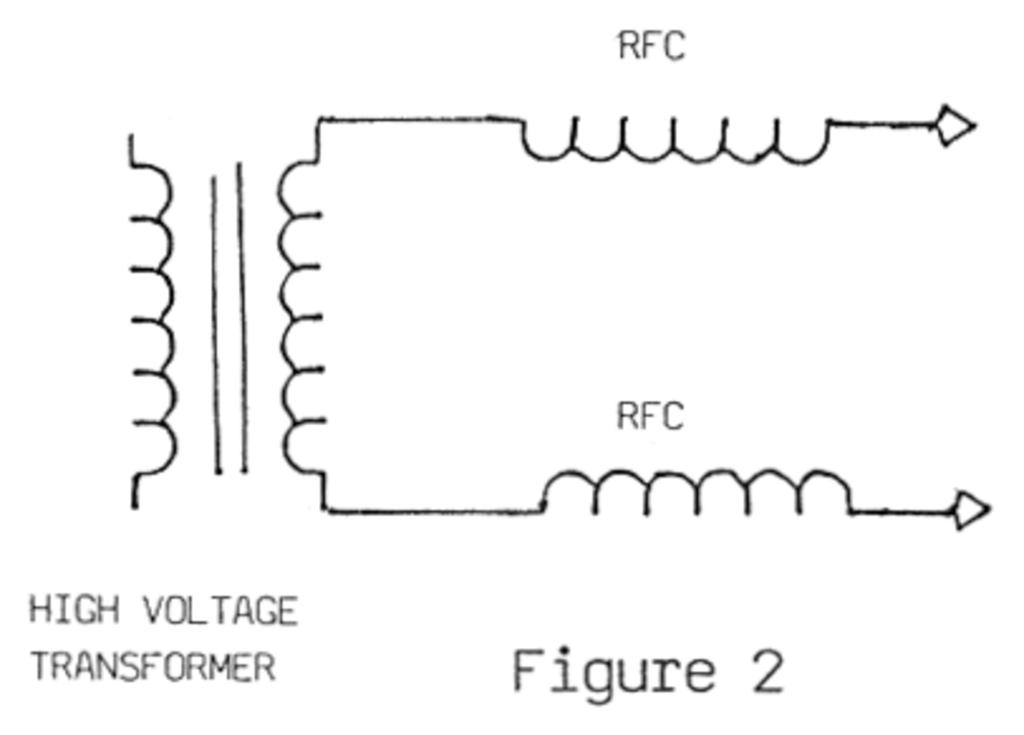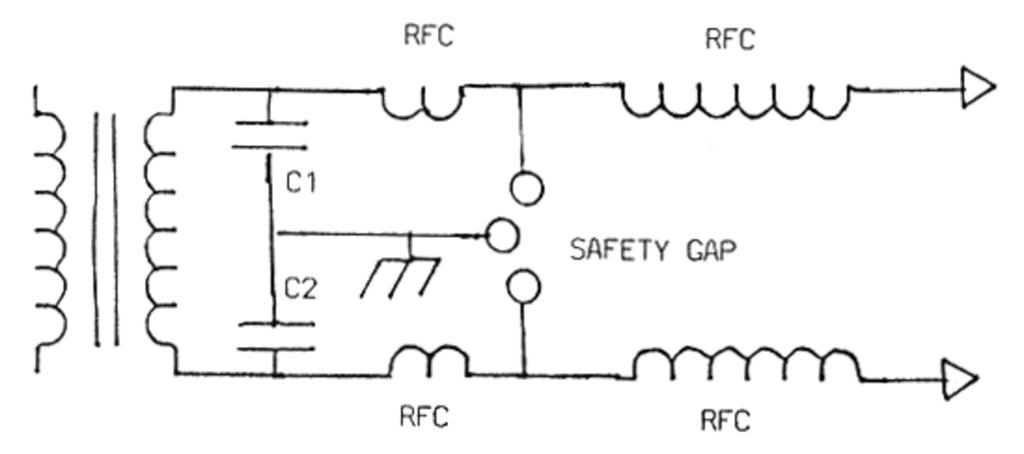TCBA Volume 9 - Issue 1
Page 7 of 18
Input - Output
Q. A Tesla coil book states that copper tubing is better than solid wire for primary coils. Why?
A. Although the current density has its greatest magnitude on the surface of a conductor, after a certain depth of penetration the current may actually be flowing in the opposite direction (Figure 1). This phenomenon may show up as an increase in resistance. Consequently, a hollow conductor would show less resistance than a solid wire of equal diameter. In other words, it is possible to have too much conductor.
Q. Some Tesla coil articles show how to tune a Tesla coil by using taps on the primary coil while others state that this shouldn't be done?
A. It's probably best to use all of the primary turns rather then leaving some as “dead turns.” You can tap your primary to tune your coil for purposes of determining just how much more or less capacitance is needed. Once the right amount is in place, then the taps are no longer needed. If you decide to use taps, short out all the unused turns.
Q. I've lost several expensive transformers and would like some helpful hints on the construction and use of choke coils?
A. The use of choke coils in a circuit can vary from just one to several. I suggest at least one choke be placed on each side of the high voltage transformer's output (Figure 2). The parameters of a choke depend upon the power level of the circuit. A small table-top Tesla coil powered by a 30 ma transformer need not be wound with more than 20-30 turns of #18 on a one-half to three-quarter inch coil form. On the other hand, a 1 kva or larger circuit might require 30-40 turns of #14 or larger wire on a form 6" long and 2 1/2" diameter.
The arrangement shown in Figure 3 is used by many Tesla coil buffs.
Chokes should be mounted in a position that prevents coupling with the Tesla coil primary and secondary coils. That is, place the chokes in a horizontal position when the Tesla coil secondary is in a vertical position. Reverse this procedure for horizontally mounted Tesla coils.
Lastly, a safety gap should be employed across the transformer high voltage terminals.
Q. Are you aware of anyone giving Tesla coil demonstrations who have some kind of liability insurance coverage? I don't mean to sound paranoid but people sue at the drop of a hat these days and I wouldn't want to end up on the wrong side of a judge's gavel. Have you heard of any horror stories about injury or property damage?
A. I consider your question a sign of prudence, not paranoia. I know a number of cases where Tesla coil freaks have crossed the line between prudence and carelessness. Fortunately, I have not heard of any TCBA'er causing a death.
Problems generally occur when large “light dimmer” Tesla coils are involved but I have also heard of problems where smaller coils were being demonstrated. In some cases, there was damage to sensitive equipment such as computer type apparatus.
The size and power of the Tesla coil being demonstrated should fit the occasion. Is it really necessary to demonstrate a Tesla coil giving 6' sparks to children of elementary school age? A 3" spark would be more appropriate. Unfortunately, many who demonstrate Tesla coils find a small project intimidating and that it doesn't provide an adequate demonstration of their ability.
This syndrome is common among Tesla coil builders. If anyone is compelled to make a name for themselves, it should not be done at the expense of someone's life and property. It's OK to emulate personalities such as the late Ken Strickfaden. KenStric is a fine example to follow but not all of us possess Ken's character or sense of good judgment.
I can't give you any figures on insurance coverage. Even with insurance protection, causing injury to someone relieves only the financial burden - not the damage!



